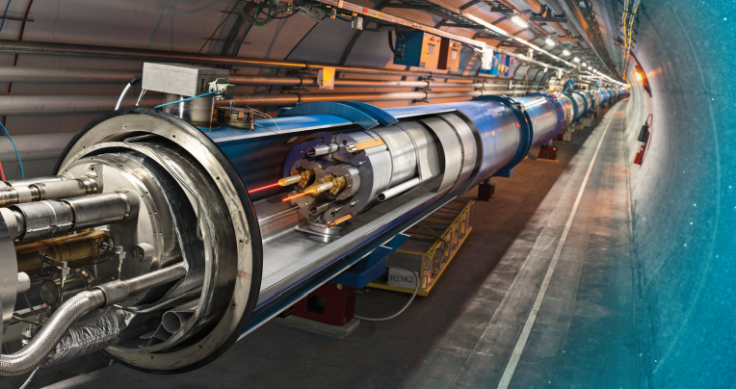CERN LHC Update: ATLAS Collaboration Releases 8 TeV Proton Collision Data, Tools Needed To Peruse It

In April, scientists associated with the CMS collaboration at the European Organization for Nuclear Research (CERN) released over 300 TB of proton collision data gathered in 2011. Now, the ATLAS collaboration — the other big experiment at CERN — has released data from over 100 trillion collisions gathered during the Large Hadron Collider's run in 2012.
This marks the first public release of data about proton-proton collisions at 8 teraelectronvolts. In comparison, in 2015, the LHC — the world's largest particle accelerator — carried out collisions at a record-breaking energy of 13 TeV.
"The ATLAS collaboration exemplifies the culture of open science, with thousands of physicists working around the world to further our understanding of the universe," Kate Shaw, ATLAS Outreach co-coordinator, said in a statement. “Making our data publicly available is a natural development of this open culture."
ATLAS is just one of the four main detectors housed in the 17-mile-long ring of the LHC. Previously, collision data collected by the other three detectors — ALICE, CMS, and LHCb — has also been released through the CERN Open Data Portal.
The released ATLAS data, along with the analysis tools and the educational platform needed to peruse it, occupy a space of just under 11 GB, making them, according to CERN, ideal for "educators in developing countries who may have limited computing resources."
"This platform is a key part of the ATLAS Open Data release," ATLAS physicist Felix Socher said in the statement. "It bridges the gap between physicists and the public, with extensive documentation to demystify the data analysis process. Users can follow worked examples using the ATLAS open dataset, and then carry out analyses on their own."
The LHC, which, in 2012, detected the Higgs boson — a particle that imparts mass to all others — is currently on a "break." Researchers at CERN are testing the accelerator by circulating and colliding proton beams in their effort to increase its "luminosity" — the number of collisions — during its next run, which is scheduled to begin in less than a week.
For particle physicists at CERN, a key area of focus during the LHC's next run would be the mysterious "bump" in data that was detected by both ATLAS and CMS in December. While sifting through the debris of proton-proton collisions, scientists spotted excess photons carrying around 750 gigaelectronvolts (GeV) of combined energy — something that may have been a telltale sign of a particle, about six times more massive than the Higgs boson, decaying into a pair of photons of equal mass, or a series of particles that decayed into photons that were able to "fake" the signal at 750 GeV.
Either way, if such particles are discovered, it would definitely herald an era of "new physics" — one that goes beyond the Standard Model, which, despite its phenomenal success, is still woefully incomplete.
© Copyright IBTimes 2024. All rights reserved.












